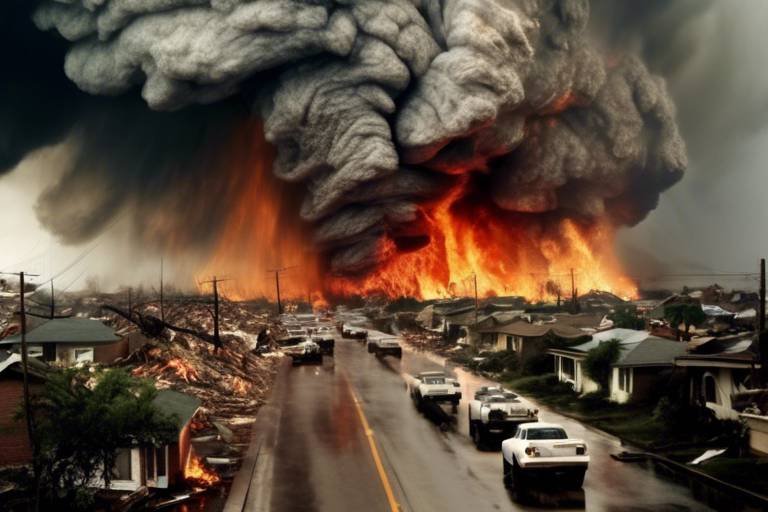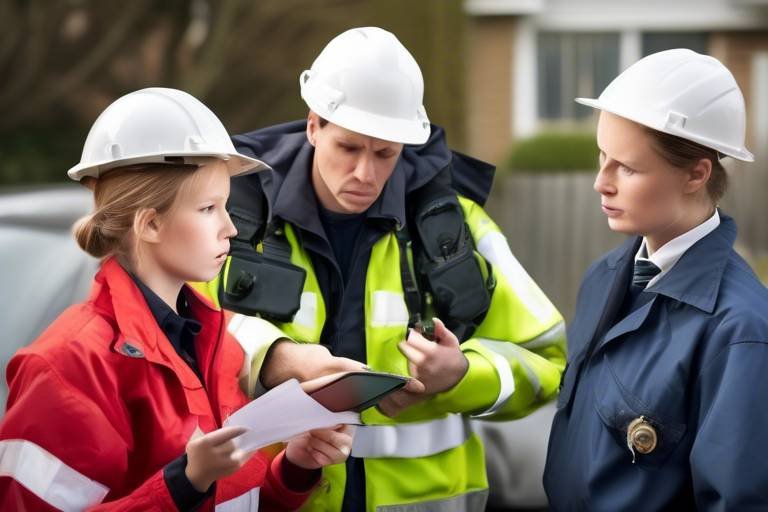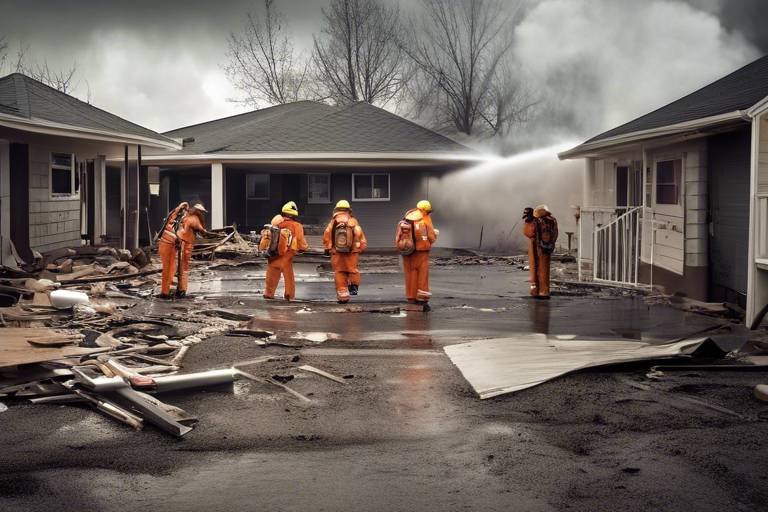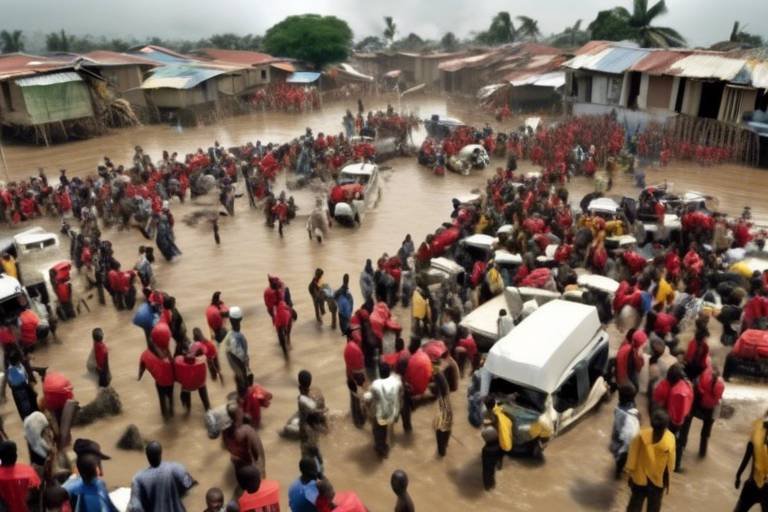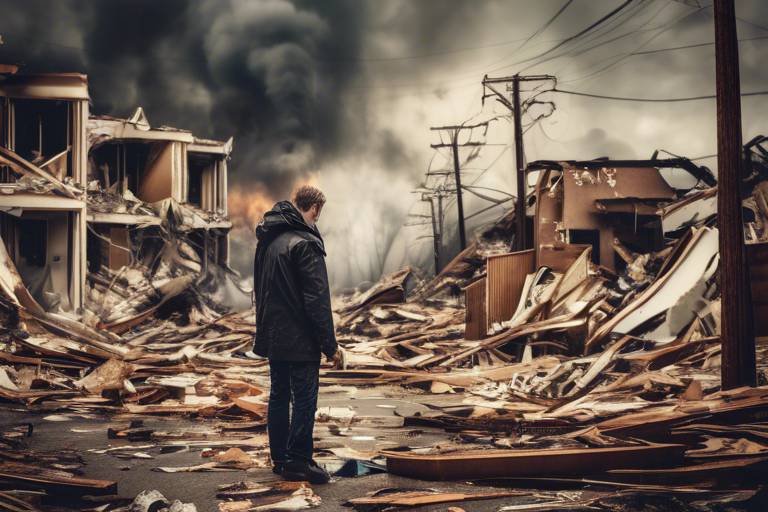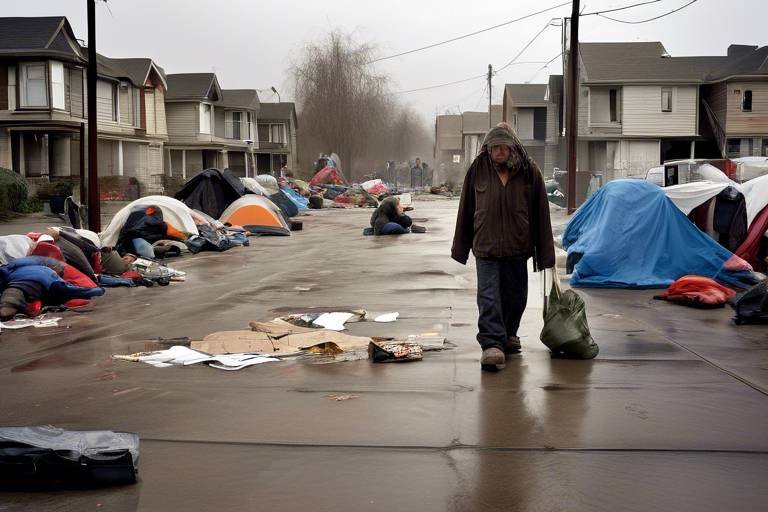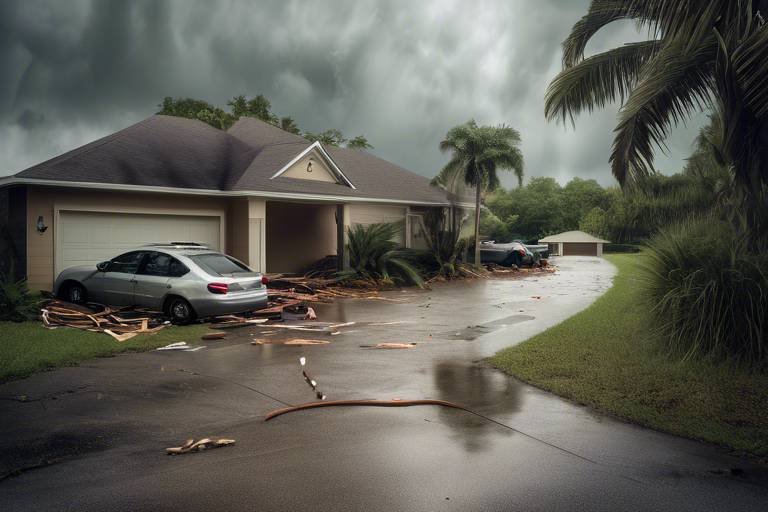Disaster Management - A Review of Best Practices
Disasters can strike at any moment, often leaving communities reeling in their wake. Whether it's a natural calamity like an earthquake or a man-made crisis such as a chemical spill, the need for effective disaster management is paramount. This article explores effective strategies and methodologies in disaster management, highlighting best practices that can enhance preparedness, response, recovery, and mitigation efforts in various disaster scenarios. By understanding the intricacies of disaster management, we can better equip ourselves to handle the unexpected and reduce the devastating impacts on lives and property.
At its core, disaster management encompasses the processes involved in preparing for, responding to, and recovering from disasters. It is a comprehensive approach that includes several key components and phases:
- Preparedness: This is about having plans and resources in place before a disaster strikes.
- Response: This phase involves the immediate actions taken to ensure safety and provide assistance.
- Recovery: After the crisis, recovery focuses on restoring normalcy and rebuilding.
- Mitigation: This involves strategies aimed at reducing the likelihood or impact of future disasters.
Each of these phases is interconnected and essential for a holistic approach to disaster management. By understanding these components, communities can develop a robust framework that enables them to tackle disasters effectively.
Preparedness is crucial in minimizing the impact of disasters. Think of it as the safety net that catches you when you fall. Effective preparedness strategies include:
- Training: Regular drills and training sessions for emergency responders and community members can significantly enhance readiness.
- Resource Allocation: Ensuring that resources, such as food, water, and medical supplies, are readily available and accessible can make all the difference during a crisis.
- Community Engagement: Involving local residents in planning and preparedness activities fosters a sense of ownership and responsibility.
By implementing these strategies, communities can create a culture of preparedness that empowers individuals and groups to act swiftly and effectively when disaster strikes.
When disaster strikes, effective response mechanisms are vital. Think of emergency services as the first responders, akin to firefighters rushing into a burning building. Their role is crucial in saving lives and minimizing injuries. Key elements of effective response mechanisms include:
- Emergency Services: Firefighters, paramedics, and police must work in harmony to ensure a swift response.
- Communication Systems: Reliable communication channels are essential for coordinating efforts and disseminating information.
- Coordination Among Agencies: Collaboration between local, state, and federal agencies can enhance the overall response effort.
Efficient response mechanisms not only save lives but also lay the groundwork for a smoother recovery process.
Post-disaster recovery is essential for restoring communities. It’s akin to healing after an injury; the process takes time and requires thoughtful planning. Best practices in recovery include:
- Rebuilding Infrastructure: Prioritizing the restoration of critical infrastructure, such as roads, hospitals, and schools, is vital.
- Psychological Support: Providing mental health resources to help individuals cope with trauma and loss is crucial for community resilience.
- Economic Revitalization: Encouraging local businesses to reopen and thrive can help restore the economic fabric of the community.
By focusing on these recovery processes, communities can emerge stronger and more resilient than before.
Mitigation involves proactive measures to reduce disaster risks. Think of it as putting up a fence to prevent a flood from washing away your backyard. Various techniques can be employed, such as:
- Land-Use Planning: Smart planning can help avoid building in high-risk areas.
- Building Codes: Enforcing strict building codes can ensure structures are resilient to disasters.
- Public Education: Educating the community about risks and preparedness can significantly reduce vulnerability.
Implementing these techniques creates a safer environment and lessens the impact of potential disasters.
Technology plays a significant role in disaster management. Imagine having a crystal ball that predicts disasters; technology is the closest thing we have. Innovative tools and systems, such as:
- GIS (Geographic Information Systems): Helps in mapping and analyzing disaster-prone areas.
- Early Warning Systems: Provides alerts about potential disasters, giving communities time to prepare.
- Drones: Used for reconnaissance and damage assessment in hard-to-reach areas.
These advancements enhance disaster preparedness and response, ultimately saving lives and resources.
Community involvement is critical in disaster management. It’s like a team sport; everyone has a role to play. Local engagement, volunteer programs, and partnerships can significantly enhance a community's ability to respond effectively to disasters. When local residents are involved, they not only feel a sense of responsibility but also bring unique insights and resources to the table.
Learning from real-life examples is invaluable. For instance, after Hurricane Katrina, New Orleans implemented several best practices that have since guided disaster management across the country. By reviewing case studies of successful disaster management practices, we can identify effective strategies that have led to improved outcomes in various disasters.
The landscape of disaster management is evolving. Just as technology changes the way we live, it also shapes how we prepare for and respond to disasters. Emerging trends include climate change adaptation, policy development, and global collaboration. These factors are reshaping disaster management practices and will continue to do so in the future.
Q: What is the most critical phase of disaster management?
A: While all phases are important, preparedness is often seen as the most critical, as it sets the foundation for effective response and recovery.
Q: How can communities prepare for disasters?
A: Communities can prepare by conducting drills, creating emergency plans, and engaging residents in preparedness activities.
Q: What role does technology play in disaster management?
A: Technology enhances disaster preparedness and response through tools like early warning systems, GIS, and drones, improving efficiency and effectiveness.

Understanding Disaster Management
Disaster management is more than just a buzzword; it’s a comprehensive approach that involves a series of processes aimed at preparing for, responding to, and recovering from various disasters. Think of it as a safety net that cushions communities from the harsh impacts of natural and man-made calamities. The essence of disaster management lies in its ability to coordinate efforts across different phases, ensuring that when disaster strikes, the response is swift, organized, and effective.
At its core, disaster management can be broken down into four key phases: Preparedness, Response, Recovery, and Mitigation. Each phase plays a critical role in safeguarding lives and property. Preparedness involves planning and training, ensuring that individuals and organizations are ready to act when disaster strikes. This could include conducting drills, developing emergency plans, and allocating resources effectively.
Once a disaster occurs, the response phase kicks in. This is where emergency services and first responders leap into action, aiming to save lives and minimize harm. Effective communication systems are vital here; they ensure that information flows seamlessly among agencies and the public. Imagine a well-oiled machine where each cog knows its role, working together to tackle the crisis at hand.
After the immediate danger has passed, the focus shifts to recovery. This phase is all about rebuilding and restoring communities to their pre-disaster state, or even better. It involves not only repairing physical infrastructure but also addressing the psychological and economic impacts of the disaster on individuals and communities. Recovery can take years, and it requires a concerted effort from government bodies, NGOs, and the community itself.
Lastly, we have mitigation, which is the proactive side of disaster management. It involves implementing measures to reduce disaster risks before they happen. This could include enforcing strict building codes, engaging in land-use planning, and educating the public about disaster preparedness. By investing in mitigation strategies, communities can significantly lessen the impact of future disasters.
In summary, understanding disaster management requires recognizing its multifaceted nature. It’s about being prepared, responding effectively, recovering comprehensively, and mitigating risks. Each phase is interconnected, and the success of one often hinges on the others. By fostering a culture of preparedness and resilience, we can create safer communities that are better equipped to handle the unexpected.
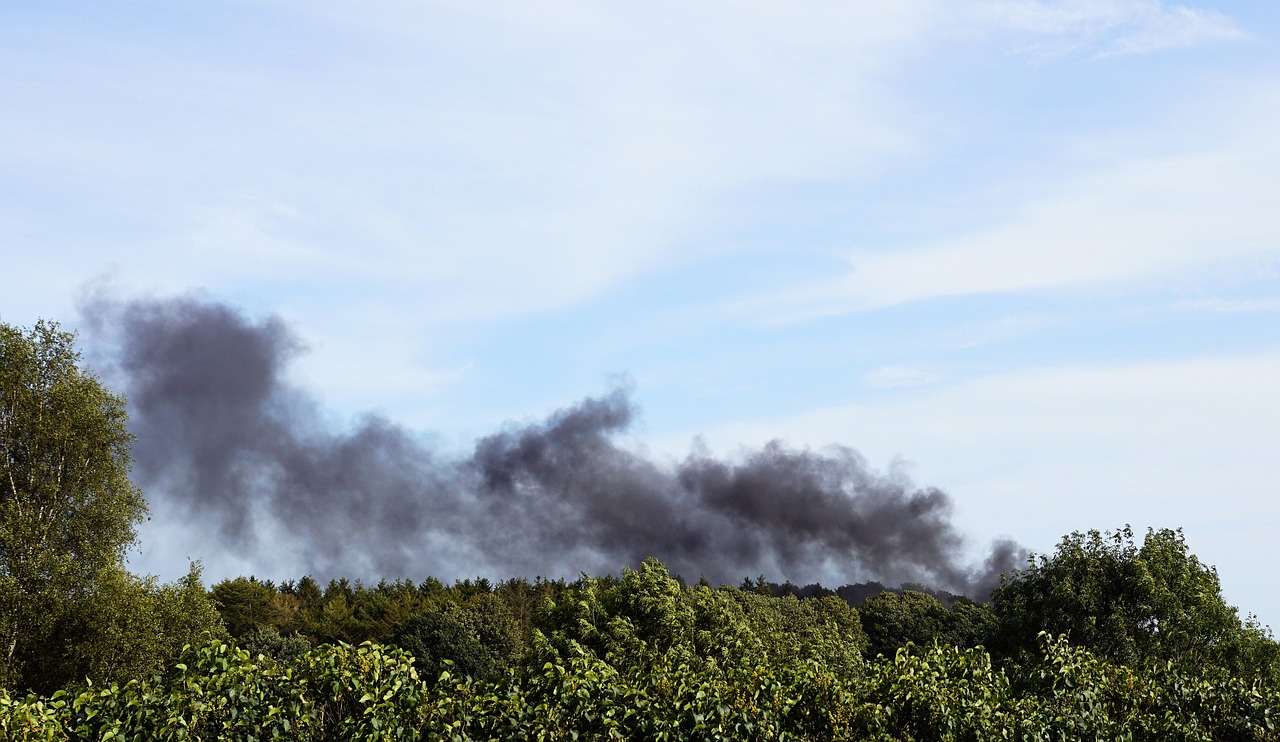
Preparedness Strategies
When it comes to disaster management, preparedness is the name of the game. It’s like having a fire extinguisher in your kitchen—you hope you never need it, but when the moment comes, you’ll be incredibly grateful you took the time to prepare. Preparedness strategies are designed to minimize the impact of disasters by ensuring that individuals, communities, and organizations are ready to respond effectively. These strategies can be categorized into several key areas: training, resource allocation, and community engagement.
First off, let’s talk about training. Engaging in regular training exercises is crucial for any disaster response team. This includes simulations and drills that mimic real-life scenarios, allowing responders to practice their roles and refine their skills. For instance, fire departments often conduct fire drills which not only prepare firefighters but also educate the community on evacuation procedures. Imagine how much smoother an actual evacuation would go if everyone knew exactly what to do! Training should not be limited to professionals; community members can also benefit from workshops that teach basic first aid, emergency response, and even how to create a family emergency plan.
Next, we have resource allocation. This involves ensuring that the necessary resources—such as food, water, medical supplies, and shelter—are readily available before a disaster strikes. Think of it like stocking up on groceries before a snowstorm. Communities need to assess their vulnerabilities and stockpile essential supplies accordingly. Moreover, having a well-maintained inventory of these resources can make a world of difference. A well-organized database can help local authorities quickly identify what they have and what they need during a crisis. Here’s a simple table that highlights the essential resources that should be considered:
| Resource | Purpose | Quantity Recommendation |
|---|---|---|
| Water | Essential for hydration | 1 gallon per person per day for 3 days |
| Non-perishable food | To sustain individuals and families | 3-day supply for each person |
| First aid supplies | Medical assistance during emergencies | Basic kit for each household |
| Flashlights and batteries | For visibility during power outages | At least 2 per household |
Lastly, we cannot overlook the importance of community engagement. A disaster-ready community is one where everyone is involved and informed. This can be achieved through local outreach programs, where community leaders can educate residents about potential risks and the importance of preparedness. For example, organizing neighborhood meetings to discuss disaster plans can foster a sense of unity and shared responsibility. Additionally, volunteer programs can empower individuals to take part in local emergency response efforts. When people feel connected to their community, they are more likely to take preparedness seriously and act when the time comes.
In summary, preparedness strategies are not just about having the right supplies; they encompass a holistic approach that includes training, resource management, and community involvement. By focusing on these areas, we can significantly enhance our ability to respond to disasters effectively. After all, it’s better to be safe than sorry, right?
Q: What is the first step in disaster preparedness?
A: The first step is to assess your risks and understand the types of disasters that are most likely to occur in your area. This will help you tailor your preparedness plan accordingly.
Q: How can I get my community involved in preparedness efforts?
A: Organizing local events, workshops, and meetings can engage community members. Encourage participation in drills and create volunteer opportunities for residents.
Q: What should I include in my emergency kit?
A: Your emergency kit should include water, non-perishable food, first aid supplies, flashlights, batteries, and any personal medications you may need.
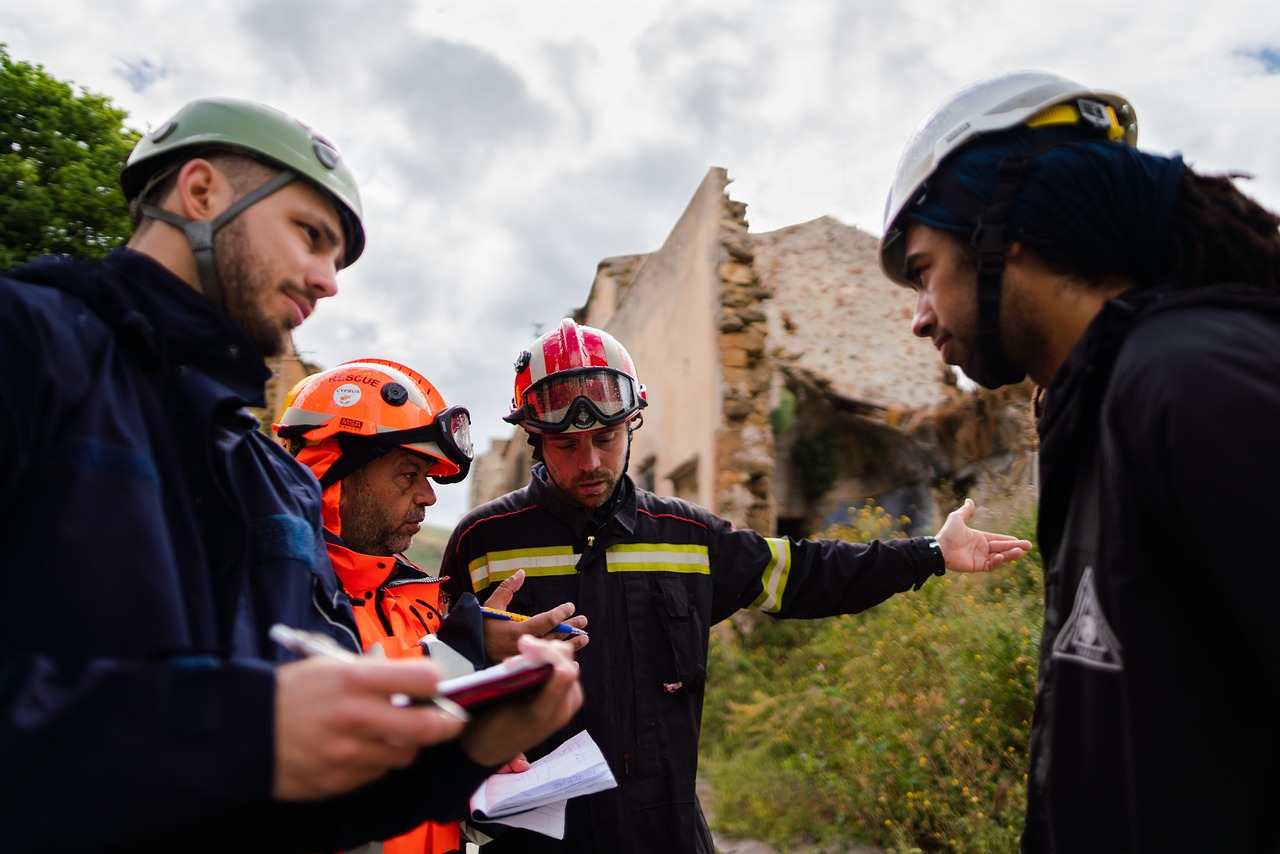
Response Mechanisms
When disaster strikes, the clock starts ticking, and every second counts. Effective can mean the difference between life and death, chaos and order. But what exactly does it take to ensure a swift and efficient response? In this section, we'll delve deep into the essential elements that make up a robust disaster response strategy.
First and foremost, the role of emergency services cannot be overstated. These brave men and women are often the first on the scene, equipped with the training and tools necessary to tackle immediate threats. From firefighters battling raging infernos to paramedics providing critical medical care, emergency services form the backbone of any response effort. Their coordination with local authorities and community organizations is crucial to streamline operations and maximize impact.
Communication systems also play a pivotal role in disaster response. Imagine trying to coordinate a rescue operation without a reliable means of communication—it's like trying to navigate a maze blindfolded. Effective communication ensures that information flows seamlessly between agencies, volunteers, and the affected communities. This can include everything from traditional radio systems to modern mobile apps that provide real-time updates on the situation. The goal is to keep everyone informed and connected, reducing confusion and enhancing the effectiveness of the response.
Coordination among various agencies is another critical aspect of disaster response. It’s not just about having the right people on the ground; it’s about ensuring they work together efficiently. This can often be achieved through the establishment of an Incident Command System (ICS), which provides a standardized approach to the command, control, and coordination of emergency response. By clearly defining roles and responsibilities, agencies can avoid overlap and ensure that all bases are covered.
To illustrate the importance of these response mechanisms, consider the following table that highlights key components and their functions:
| Component | Function |
|---|---|
| Emergency Services | First responders who provide immediate assistance and medical care. |
| Communication Systems | Facilitate real-time information sharing among agencies and the public. |
| Coordination Agencies | Ensure unified efforts between different organizations and stakeholders. |
Additionally, community involvement plays a crucial role during these critical moments. Local residents are often the first to respond, providing aid and support before official resources arrive. Training community members in basic first aid and emergency response can significantly enhance the overall effectiveness of disaster response efforts. Imagine a neighborhood where everyone knows how to handle a crisis—it’s like having an army of trained volunteers ready to spring into action.
In summary, effective response mechanisms are multifaceted, requiring cooperation, communication, and coordination among various entities. As we look towards the future, it’s essential to continually refine these processes, learning from past experiences and adapting to new challenges. After all, when disaster strikes, every moment counts, and having a solid response plan in place can save lives and restore hope in the face of adversity.
- What are the main components of disaster response? The main components include emergency services, communication systems, and coordination among agencies.
- How can communities prepare for disaster response? Communities can prepare by training residents in first aid and emergency response techniques.
- Why is communication important during a disaster? Communication ensures that all parties are informed and can act efficiently, reducing confusion and improving response efforts.

Recovery Processes
Post-disaster recovery is not just about rebuilding structures; it’s about restoring the very essence of communities that have faced adversity. Imagine a town that has just experienced a devastating flood. The water has receded, but the emotional and physical scars remain. Recovery processes must be holistic, addressing not only the infrastructure but also the psychological and economic health of the community.
One of the first steps in the recovery process is conducting a thorough assessment of the damage. This involves not only evaluating physical losses, such as homes and businesses, but also understanding the needs of the affected population. Engaging with the community is crucial here. Residents often have invaluable insights into what is needed for effective recovery. By listening to their voices, recovery efforts can be more targeted and effective.
In addition to infrastructure rebuilding, providing psychological support is essential. Disasters can leave lasting emotional impacts, and communities may need access to mental health resources. Establishing support groups and counseling services can help individuals process their experiences and foster a sense of community resilience. For example, after Hurricane Katrina, many organizations mobilized to provide mental health services, helping individuals cope with trauma and loss.
Economic revitalization is another key component of recovery. It’s not enough to rebuild homes; local businesses must also be supported to ensure that jobs are restored and the local economy can thrive again. This could involve offering grants or low-interest loans to help businesses get back on their feet. In many cases, creating a recovery fund can be a lifeline for entrepreneurs looking to rebuild their enterprises.
To illustrate these concepts, consider the following table that outlines key recovery strategies:
| Recovery Strategy | Description | Example |
|---|---|---|
| Infrastructure Rebuilding | Restoration of homes, roads, and public facilities. | Reconstruction of bridges after an earthquake. |
| Psychological Support | Providing mental health resources and counseling. | Support groups for survivors of natural disasters. |
| Economic Revitalization | Supporting local businesses to recover. | Grants for small businesses affected by a hurricane. |
Ultimately, the recovery process is about fostering resilience. This means not only rebuilding what was lost but also ensuring that communities are better prepared for future disasters. By integrating lessons learned from past events, communities can develop strategies that enhance their ability to bounce back, creating a stronger, more united front against potential threats.
In summary, recovery processes are multifaceted and require a concerted effort from various stakeholders, including government agencies, non-profits, and community members. The goal is to rebuild not just the physical structures but also the social fabric that binds communities together.
What is the first step in the recovery process?
The first step is to conduct a thorough assessment of the damage and understand the community's needs.
Why is psychological support important during recovery?
Psychological support helps individuals cope with trauma and emotional distress caused by disasters, fostering resilience.
How can communities ensure economic revitalization after a disaster?
Communities can support local businesses through grants, low-interest loans, and by creating recovery funds to help them recover.
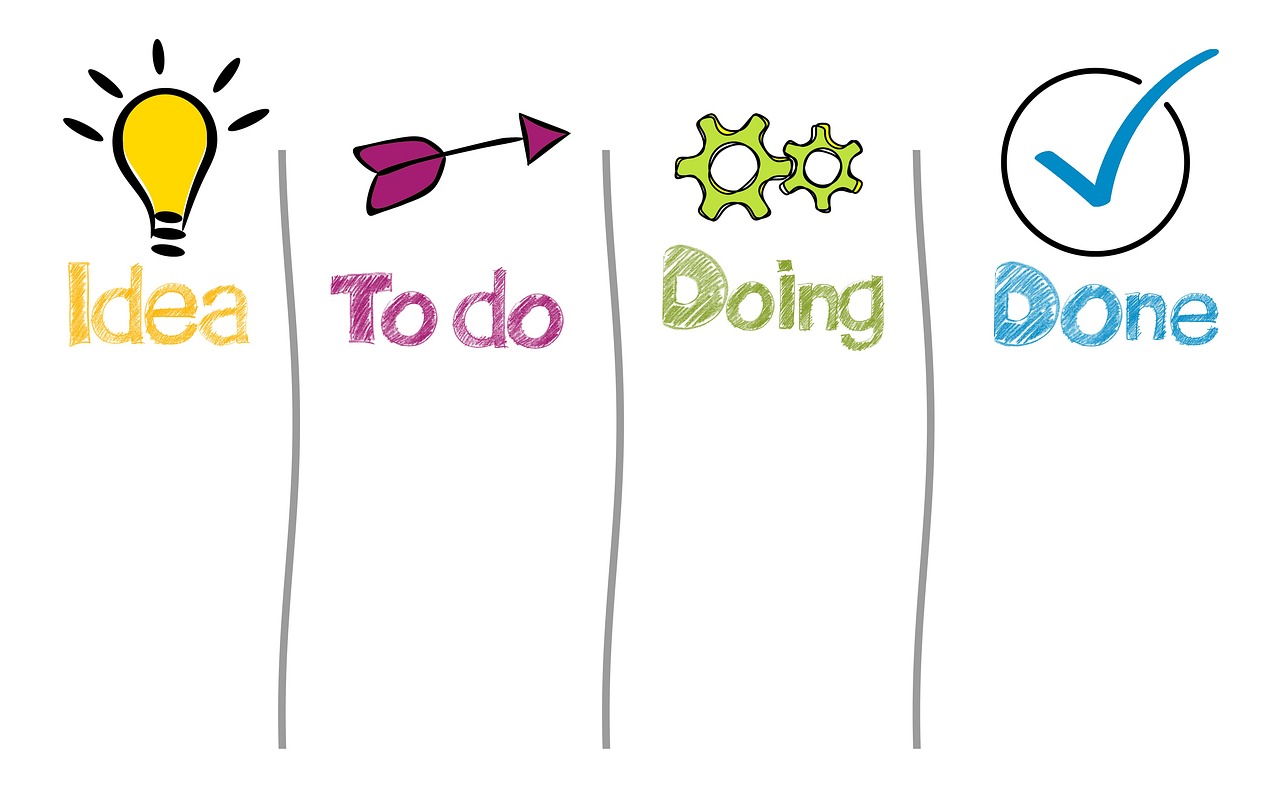
Mitigation Techniques
Mitigation is the backbone of effective disaster management, acting as a shield against the unforeseen calamities that life throws our way. Think of it as the safety net that catches you before you hit the ground. By implementing proactive measures, communities can significantly reduce the risks associated with disasters. This section delves into various that can make a world of difference in enhancing resilience.
One of the primary strategies in mitigation is land-use planning. This involves making informed decisions about how land is developed and used. For instance, avoiding construction in flood-prone areas or ensuring that new buildings adhere to strict safety standards can prevent disasters from escalating. It’s like building a house on a solid foundation; if the foundation is weak, the entire structure is at risk.
Another crucial aspect is the establishment of building codes. These codes set the minimum standards for construction, ensuring that buildings can withstand various hazards, such as earthquakes, hurricanes, or floods. For example, in earthquake-prone regions, buildings must be designed to absorb shocks. This is akin to putting on a seatbelt before driving; it’s a simple precaution that can save lives.
Public education is also a vital component of mitigation. When communities are educated about potential risks and how to respond, they are better equipped to handle disasters. Schools, local governments, and organizations can collaborate to hold workshops and drills that teach individuals how to prepare for emergencies. Imagine being taught to swim before being thrown into deep waters; knowledge is empowerment.
Furthermore, community engagement plays a pivotal role in mitigation. When residents are involved in planning and decision-making, they are more likely to support and adhere to mitigation efforts. This engagement can take many forms, from community meetings to volunteer programs aimed at disaster preparedness. It’s like planting a garden together; when everyone contributes, the results are more fruitful.
| Mitigation Technique | Description | Benefits |
|---|---|---|
| Land-Use Planning | Strategic development to avoid hazards. | Reduces vulnerability to disasters. |
| Building Codes | Standards for safe construction. | Enhances structural integrity. |
| Public Education | Informing communities about risks. | Empowers proactive responses. |
| Community Engagement | Involving residents in planning. | Fosters ownership and support. |
Additionally, the implementation of environmental management practices can help mitigate the effects of disasters. This includes maintaining natural barriers like wetlands and forests, which can absorb floodwaters and reduce the impact of storms. It’s similar to having a sponge handy when you spill water; it absorbs the excess and prevents a mess.
In conclusion, mitigation techniques are not just about preventing disasters; they are about creating a culture of preparedness and resilience within communities. By investing time and resources into these strategies, we can build a safer future where the impact of disasters is significantly minimized. Remember, it’s always better to be proactive than reactive; a stitch in time saves nine!
- What is disaster mitigation?
Disaster mitigation refers to the efforts made to reduce the impact of disasters through preparation, planning, and proactive measures.
- Why is public education important in mitigation?
Public education empowers individuals with knowledge about risks and preparedness strategies, enabling them to respond effectively during disasters.
- How does community engagement contribute to mitigation?
Engaging the community in planning and decision-making fosters a sense of ownership and increases the likelihood of successful implementation of mitigation strategies.
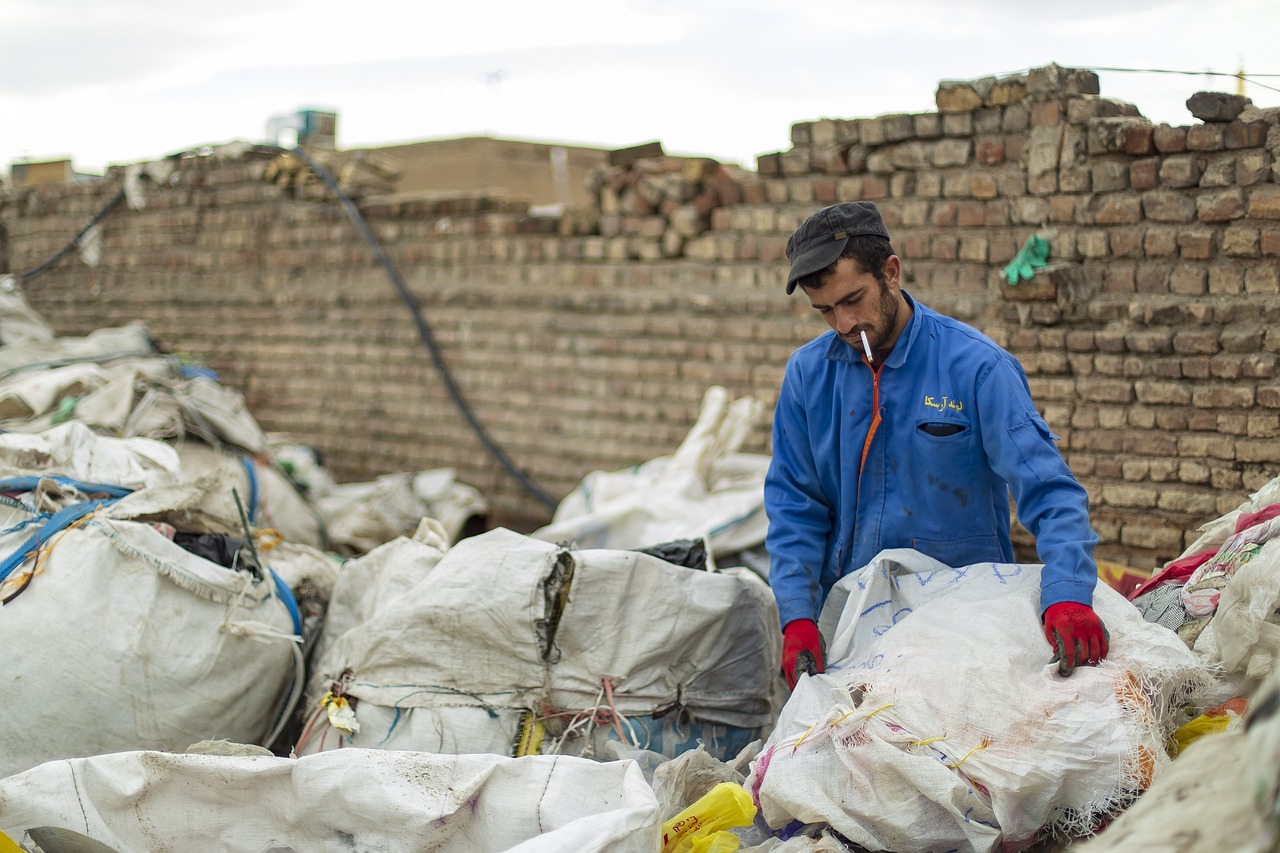
The Role of Technology
In today's fast-paced world, technology has become a cornerstone in the realm of disaster management. Imagine a scenario where a natural disaster strikes, and the response teams are equipped with cutting-edge tools that allow them to save lives and restore order swiftly. This is no longer just a dream; it is a reality made possible by advancements in technology. From early warning systems to geographic information systems (GIS), technology plays a pivotal role in enhancing disaster preparedness, response, recovery, and mitigation efforts.
One of the most significant contributions of technology in disaster management is the ability to predict and monitor disasters. Early warning systems utilize data from various sources, such as weather satellites and seismic sensors, to provide timely alerts. These systems can give communities precious minutes or even hours to prepare for an impending disaster. For instance, the integration of social media platforms has revolutionized the way information is disseminated. During emergencies, authorities can quickly share updates and safety instructions, reaching a vast audience almost instantaneously.
Furthermore, GIS technology allows for the visualization of disaster-prone areas, enabling planners to make informed decisions about resource allocation and evacuation routes. By analyzing spatial data, emergency management teams can identify vulnerable populations and prioritize their needs. This proactive approach not only enhances response efficiency but also fosters a sense of community preparedness.
Another exciting development is the use of drones in disaster response. Drones can access hard-to-reach areas, providing real-time aerial imagery that helps first responders assess damage and locate survivors. Imagine a situation where roads are blocked, and traditional vehicles cannot navigate through the debris. Drones can fly over these obstacles, delivering critical supplies or capturing essential data that aids in recovery efforts.
Moreover, technology facilitates effective communication among various agencies involved in disaster response. The use of mobile applications and cloud-based platforms enables seamless collaboration, ensuring that everyone is on the same page. For example, during a wildfire, different agencies can share information about the fire's spread, resources available, and evacuation plans through a centralized system, significantly improving coordination.
In addition to these tools, technology also plays a role in post-disaster recovery. Data analytics can help assess the impact of a disaster, guiding recovery efforts. By analyzing patterns from previous disasters, agencies can identify what worked and what didn’t, allowing for improved strategies in future incidents. This iterative process of learning and adapting is crucial for building resilient communities.
However, while the benefits of technology in disaster management are evident, it is essential to recognize the challenges that come with it. Issues such as data privacy, cybersecurity, and the digital divide can hinder the effectiveness of technological solutions. It is crucial for policymakers to address these concerns to ensure that technology serves as a tool for empowerment rather than exclusion.
In conclusion, the role of technology in disaster management cannot be overstated. It enhances preparedness, improves response times, and facilitates recovery efforts, ultimately saving lives and reducing the impact of disasters. As we continue to innovate and embrace new technologies, the potential for effective disaster management will only grow, leading us toward a more resilient future.
- How does technology improve disaster response? Technology improves disaster response by providing real-time data, enhancing communication among agencies, and enabling quick assessments of affected areas using tools like drones and GIS.
- What are early warning systems? Early warning systems are technologies that monitor environmental conditions and provide alerts about impending disasters, allowing communities to prepare in advance.
- Can technology help in post-disaster recovery? Yes, technology can assist in post-disaster recovery by analyzing data to guide rebuilding efforts and improve future disaster management strategies.

Community Involvement
When it comes to disaster management, the phrase "it takes a village" has never rung truer. Community involvement is not just an afterthought; it's a critical component that can significantly enhance the effectiveness of disaster preparedness and response. Think about it: who knows the local area better than the people who live there? They understand the unique challenges, the vulnerable populations, and the resources available. Engaging communities in disaster management creates a sense of ownership and responsibility, leading to more resilient neighborhoods.
One of the most effective ways to foster community involvement is through education and training programs. These initiatives empower residents with the knowledge and skills they need to respond effectively in times of crisis. For example, local workshops can teach basic first aid, emergency response techniques, and even how to create family emergency plans. When community members are educated, they become valuable assets in disaster scenarios, capable of assisting neighbors and emergency responders alike.
Moreover, building strong relationships with local organizations and volunteers can amplify the impact of disaster management efforts. Local nonprofits, schools, and faith-based organizations can serve as vital hubs for information dissemination, resource allocation, and volunteer coordination. By establishing partnerships with these entities, communities can ensure that aid reaches those who need it most during a disaster.
Another aspect of community involvement is the creation of volunteer programs. These programs can mobilize community members to participate in disaster drills, clean-up efforts, and recovery initiatives. For instance, organizing a local disaster drill not only prepares residents for what to expect but also fosters teamwork and camaraderie. When people work together towards a common goal, they build trust and strengthen community bonds, which are essential during challenging times.
In addition, local governments can facilitate community involvement by providing platforms for residents to voice their concerns and suggestions regarding disaster management policies. This could be through regular town hall meetings or online forums where community members can discuss their experiences and propose solutions. By listening to the voices of the community, decision-makers can create more effective and tailored disaster management plans.
To sum it up, community involvement is not merely beneficial; it is essential for effective disaster management. By fostering education, building partnerships, creating volunteer opportunities, and encouraging open communication, communities can significantly enhance their resilience against disasters. Remember, when everyone plays a part, the entire community becomes stronger and more prepared to face whatever challenges may come their way.
- Why is community involvement important in disaster management?
Community involvement ensures that local knowledge, resources, and networks are utilized effectively, leading to a more coordinated and efficient response during disasters. - How can I get involved in my community's disaster preparedness efforts?
You can participate in local training sessions, volunteer for emergency response teams, or join community organizations focused on disaster management. - What role do local organizations play in disaster management?
Local organizations help mobilize resources, provide training, and coordinate volunteer efforts, making them crucial in enhancing community resilience.

Case Studies of Successful Practices
When it comes to disaster management, learning from real-life examples can be incredibly valuable. These case studies not only highlight effective strategies but also provide insights into overcoming challenges faced during disasters. Let’s delve into a few notable instances where best practices in disaster management have made a significant impact.
One standout example is the response to Hurricane Katrina in 2005. While the initial response faced criticism, the subsequent recovery efforts showcased the importance of community engagement and inter-agency coordination. Local organizations, such as the New Orleans-based Unity of Greater New Orleans, played a pivotal role in mobilizing volunteers and resources. They focused on rebuilding homes and providing psychological support, which was essential for the community's healing process.
Another remarkable case is the earthquake in Haiti in 2010. The immediate aftermath was chaotic, but the international response evolved into a collaborative effort that emphasized local involvement. Organizations like Partners In Health worked closely with local health systems to improve medical responses and infrastructure. This collaboration not only addressed immediate needs but also laid the groundwork for long-term recovery and resilience.
In Japan, the response to the 2011 tsunami exemplifies the effectiveness of preparedness strategies. The country had invested heavily in early warning systems and public education campaigns, which played a crucial role in minimizing loss of life. After the disaster, the Japanese government spearheaded initiatives to rebuild infrastructure with a focus on disaster-resistant designs, ensuring that future structures could withstand similar events.
To further illustrate these successful practices, let's take a look at a comparative table of key case studies:
| Disaster | Location | Key Strategies | Outcome |
|---|---|---|---|
| Hurricane Katrina | USA | Community Engagement, Inter-agency Coordination | Improved Recovery and Psychological Support |
| Haitian Earthquake | Haiti | Local Involvement, Medical Response Improvement | Long-term Recovery and Resilience |
| Tsunami | Japan | Early Warning Systems, Disaster-resistant Infrastructure | Minimized Loss of Life, Enhanced Future Preparedness |
These case studies emphasize not only the importance of preparedness and response but also the critical role of community involvement and collaboration. By learning from these experiences, future disaster management efforts can be more effective, ensuring that communities are better equipped to handle the unexpected.
As we reflect on these successful practices, it’s clear that flexibility and adaptability are vital. Disasters are unpredictable, and the ability to adjust strategies based on real-time feedback can make all the difference. Engaging with local communities, leveraging technology, and fostering partnerships will continue to be essential components in the evolving landscape of disaster management.
Q: What are the key components of effective disaster management?
A: Effective disaster management includes preparedness, response, recovery, and mitigation strategies that work together to minimize the impact of disasters.
Q: How can communities prepare for disasters?
A: Communities can prepare by engaging in training, conducting drills, creating emergency plans, and building strong networks of support among residents.
Q: What role does technology play in disaster management?
A: Technology enhances disaster management through tools like early warning systems, GIS mapping, and drones, which improve situational awareness and response efficiency.
Q: Why is community involvement important in disaster management?
A: Community involvement fosters resilience, as local knowledge and resources can significantly enhance response efforts and recovery processes during and after disasters.

Future Trends in Disaster Management
As we look towards the horizon, the landscape of disaster management is continuously evolving. With the increasing frequency and intensity of disasters, it's imperative to adopt innovative approaches that not only address immediate needs but also prepare us for the future. One of the most significant trends is the integration of climate change adaptation strategies into disaster management frameworks. As our planet faces unprecedented challenges, understanding how climate impacts our vulnerability is crucial. This means developing policies that not only respond to disasters but also mitigate their risks by addressing the root causes linked to climate change.
Another exciting trend is the advancement of technology. Tools such as Geographic Information Systems (GIS) and drone technology are revolutionizing how we assess and respond to disasters. For instance, drones can provide real-time data during emergencies, allowing responders to make informed decisions quickly. Furthermore, early warning systems have become more sophisticated, utilizing machine learning algorithms to predict disasters with greater accuracy. This technological leap not only enhances our preparedness but also significantly improves our response capabilities.
Moreover, there is a growing emphasis on global collaboration. Disasters do not recognize borders, and neither should our efforts to combat them. Countries are increasingly working together, sharing resources, knowledge, and strategies. This collaborative spirit is evident in international disaster response exercises and joint training programs, which help to build a unified response framework. By learning from each other’s successes and failures, we can create a more resilient global community.
In addition to collaboration, community engagement is becoming a cornerstone of disaster management. The idea is simple: when communities are involved in the planning and execution of disaster preparedness strategies, the outcomes are often more successful. Local knowledge can provide insights that external agencies may overlook. This trend encourages the establishment of community resilience programs, where local volunteers are trained to respond effectively during disasters. Such initiatives not only empower communities but also foster a sense of ownership and responsibility towards disaster preparedness.
Lastly, we cannot ignore the importance of policy development. As new challenges arise, there is a pressing need for policies that are adaptable and forward-thinking. This includes revising building codes to ensure structures can withstand future disasters and investing in sustainable infrastructure that reduces vulnerability. Policymakers must prioritize disaster risk reduction in national agendas to create a safer environment for all.
In summary, the future of disaster management is bright, filled with potential and promise. By embracing technology, fostering global cooperation, engaging communities, and developing robust policies, we can create a resilient framework that not only responds to disasters but also anticipates and mitigates their impacts. As we navigate this evolving landscape, one thing is clear: the best way to predict the future is to prepare for it.
- What are the key future trends in disaster management?
The key trends include climate change adaptation, technological advancements, global collaboration, community engagement, and proactive policy development.
- How does technology improve disaster management?
Technology enhances disaster management through tools like GIS, drones, and early warning systems, which provide real-time data and improve response capabilities.
- Why is community involvement important in disaster management?
Community involvement ensures that local knowledge is utilized, leading to more effective and tailored disaster preparedness strategies.
- How can global collaboration benefit disaster management?
Global collaboration allows countries to share resources and strategies, leading to a unified and more effective response to disasters.
Frequently Asked Questions
- What is disaster management?
Disaster management refers to the systematic approach to preparing for, responding to, and recovering from disasters. It encompasses a range of activities aimed at minimizing the impact of disasters on communities and ensuring a coordinated response when emergencies arise.
- Why is preparedness important in disaster management?
Preparedness is crucial because it helps reduce the impact of disasters on individuals and communities. By having plans in place, conducting training, and engaging the community, people can respond more effectively when a disaster strikes, potentially saving lives and resources.
- What are the key phases of disaster management?
The key phases of disaster management include preparedness, response, recovery, and mitigation. Each phase plays a vital role in ensuring that communities are ready for disasters, can respond swiftly, recover effectively, and reduce future risks.
- How does technology enhance disaster management?
Technology enhances disaster management through tools like Geographic Information Systems (GIS), early warning systems, and drones. These innovations improve data collection, communication, and coordination, making disaster response more efficient and effective.
- What role does community involvement play in disaster management?
Community involvement is essential in disaster management as it fosters local resilience. Engaging community members in planning and response efforts ensures that the strategies are relevant, effective, and that everyone knows their role during a disaster.
- Can you provide examples of successful disaster management practices?
Yes! Successful disaster management practices can be seen in various case studies, such as Japan's earthquake preparedness measures and the community-led recovery efforts in New Orleans post-Hurricane Katrina. These examples highlight effective strategies that improved outcomes and built resilience.
- What are the future trends in disaster management?
The future trends in disaster management include a focus on climate change adaptation, enhanced policy development, and increased global collaboration. These trends aim to address the evolving nature of disasters and improve the overall effectiveness of disaster management practices.


